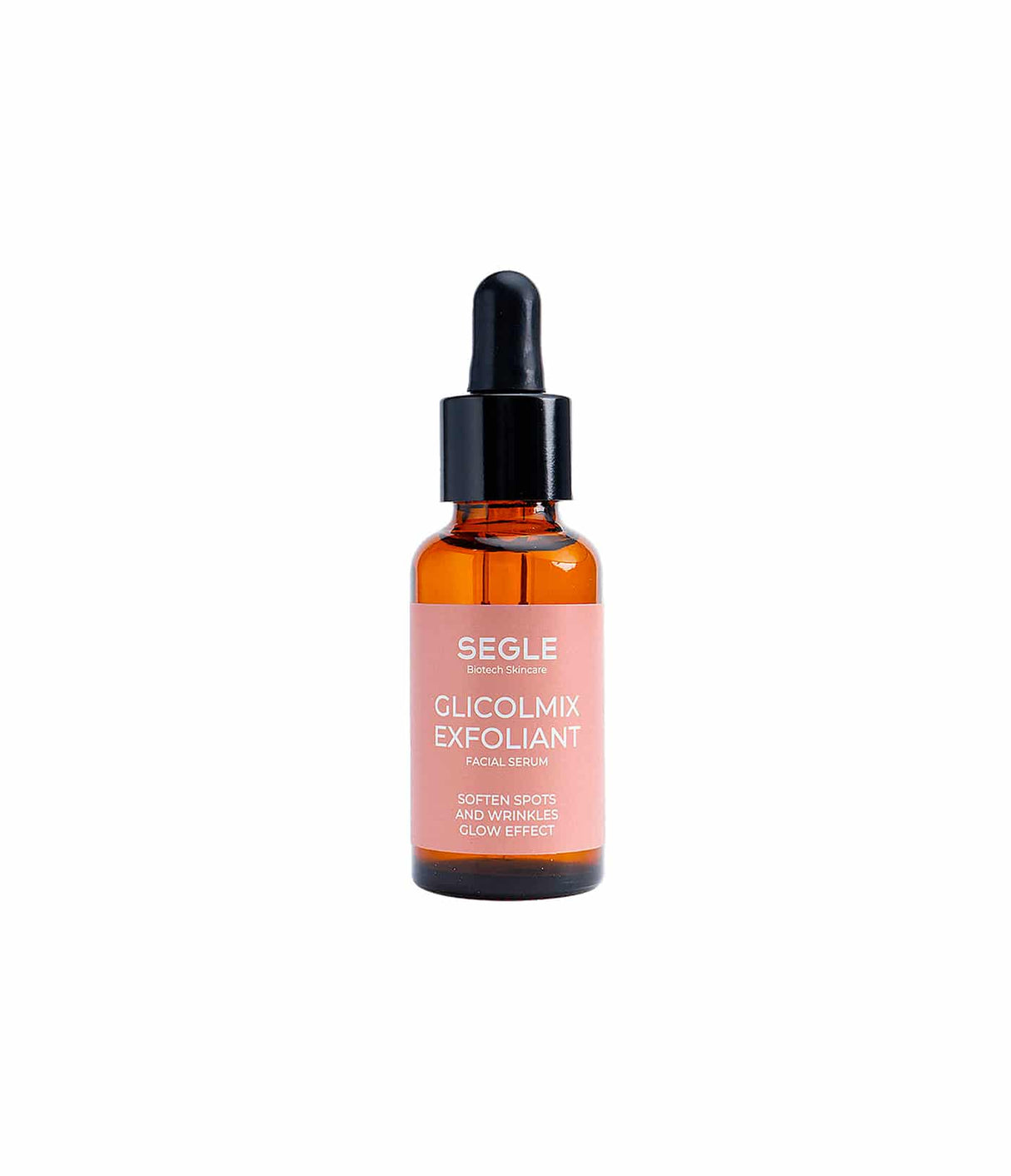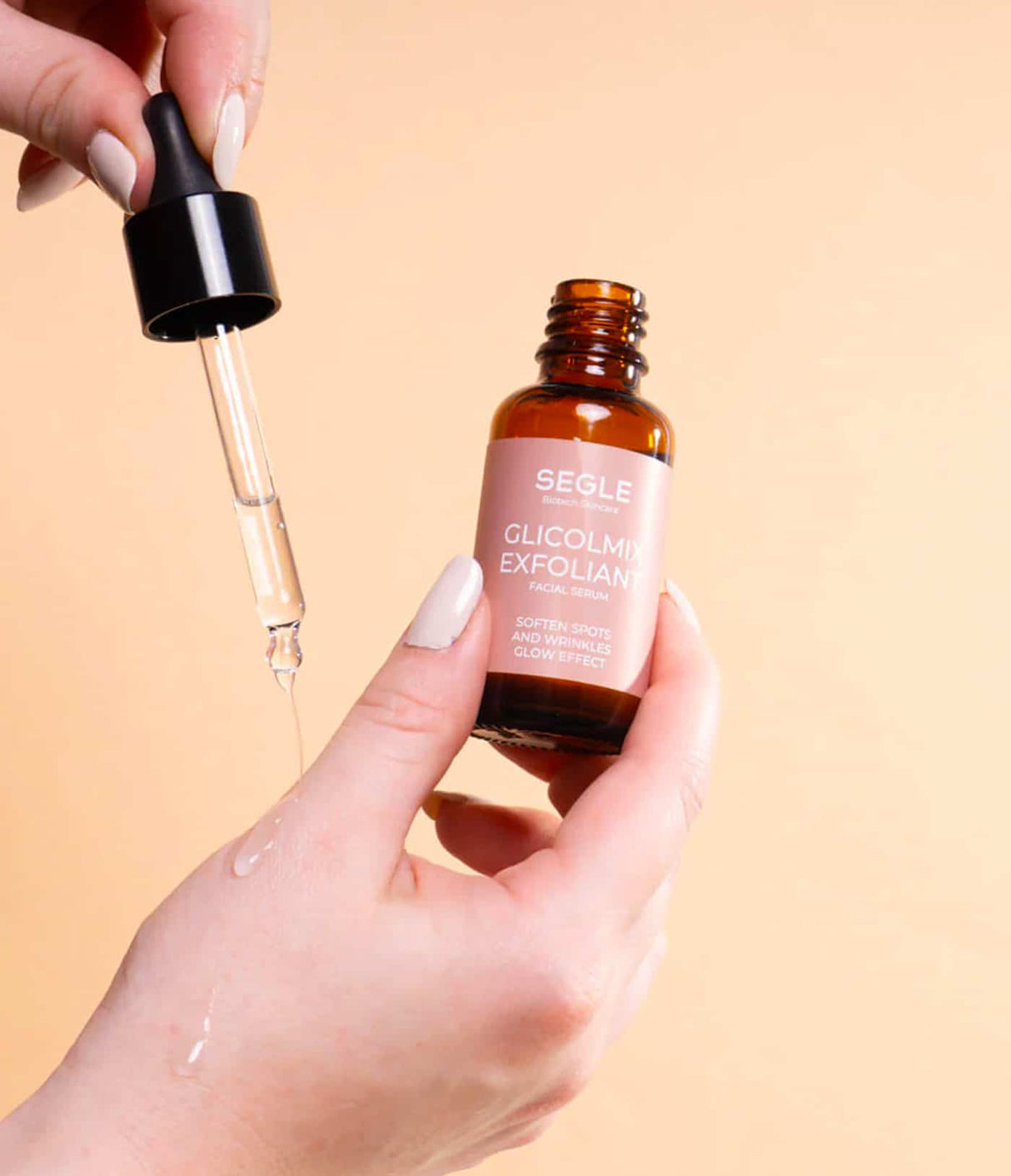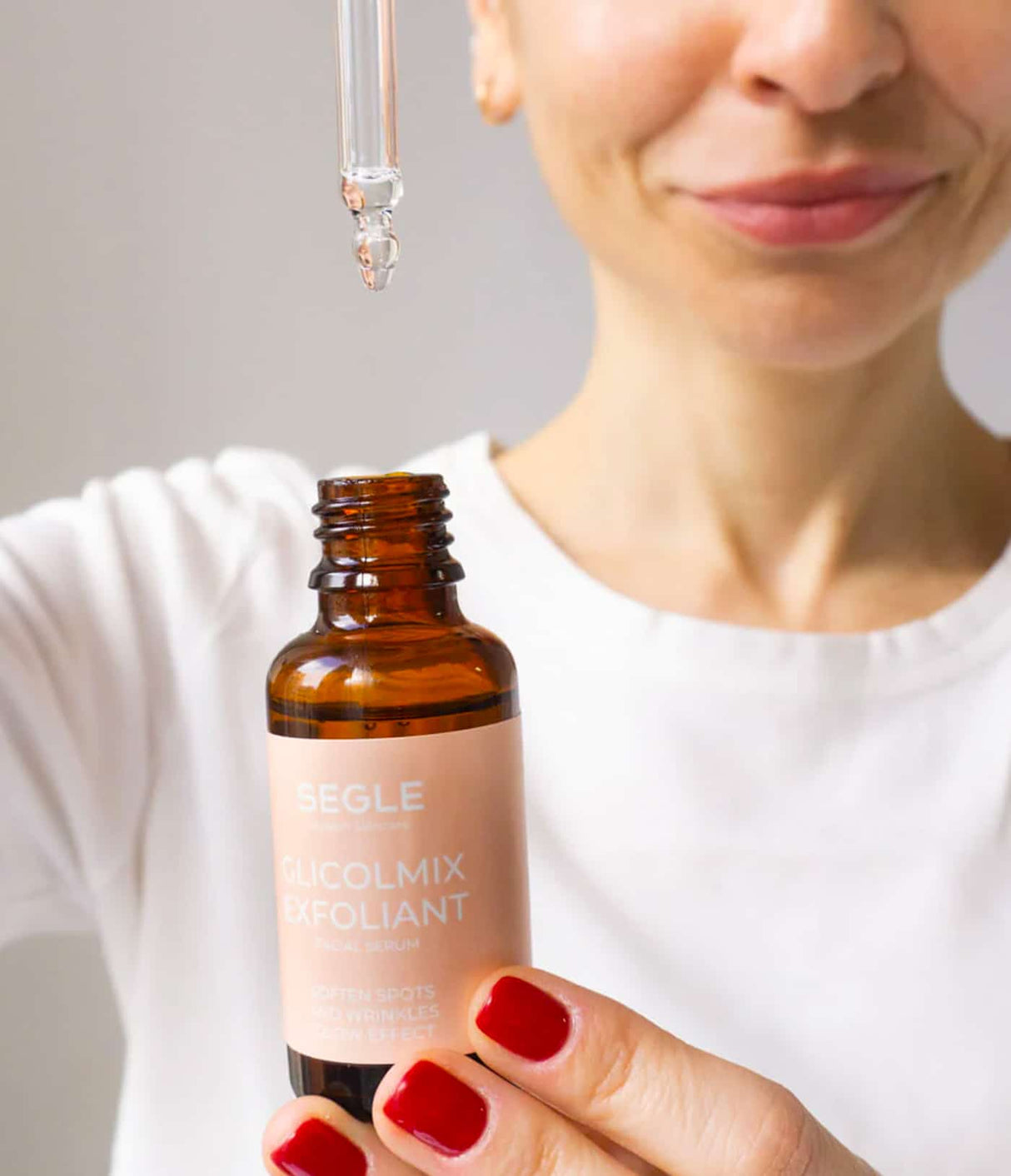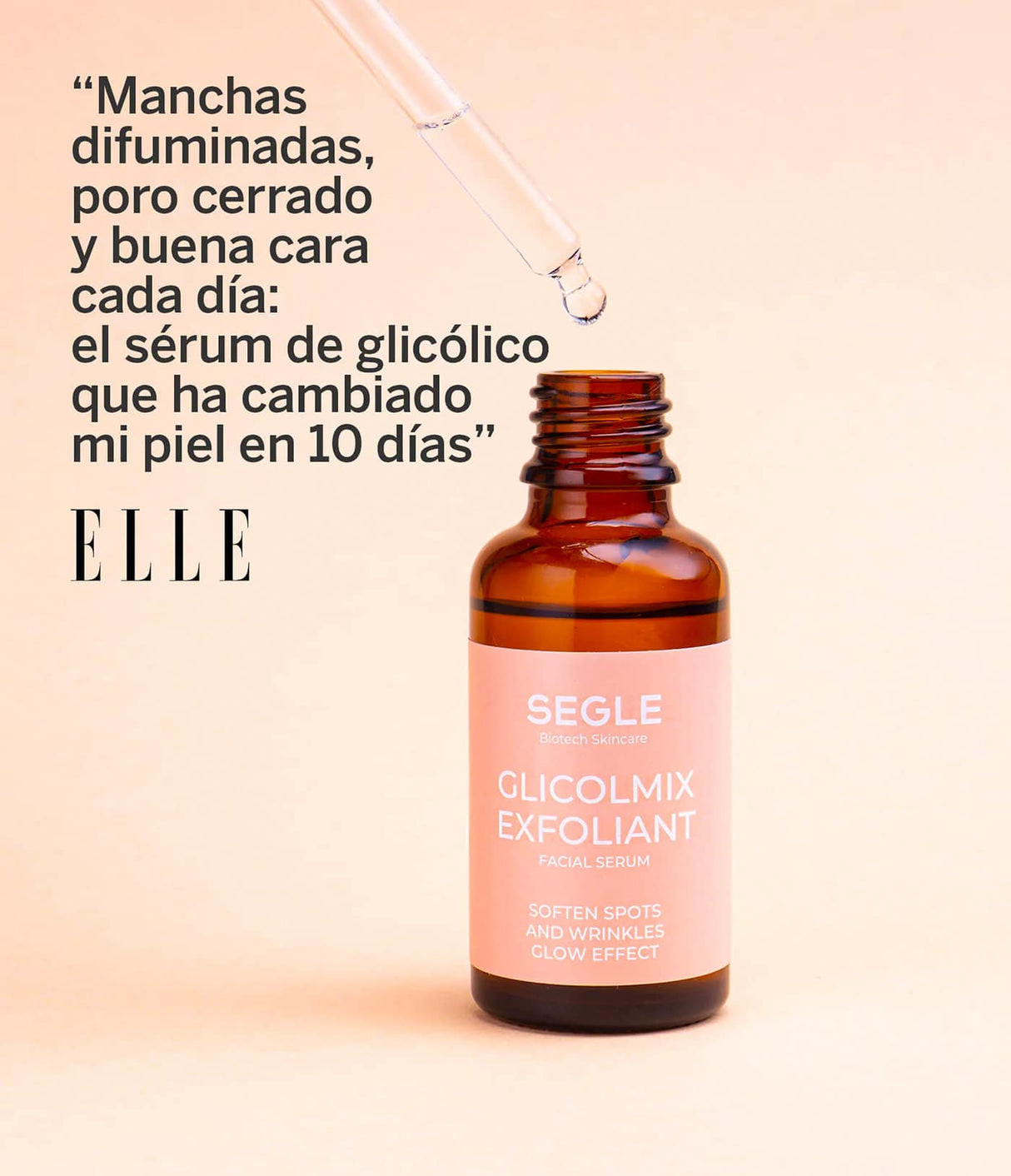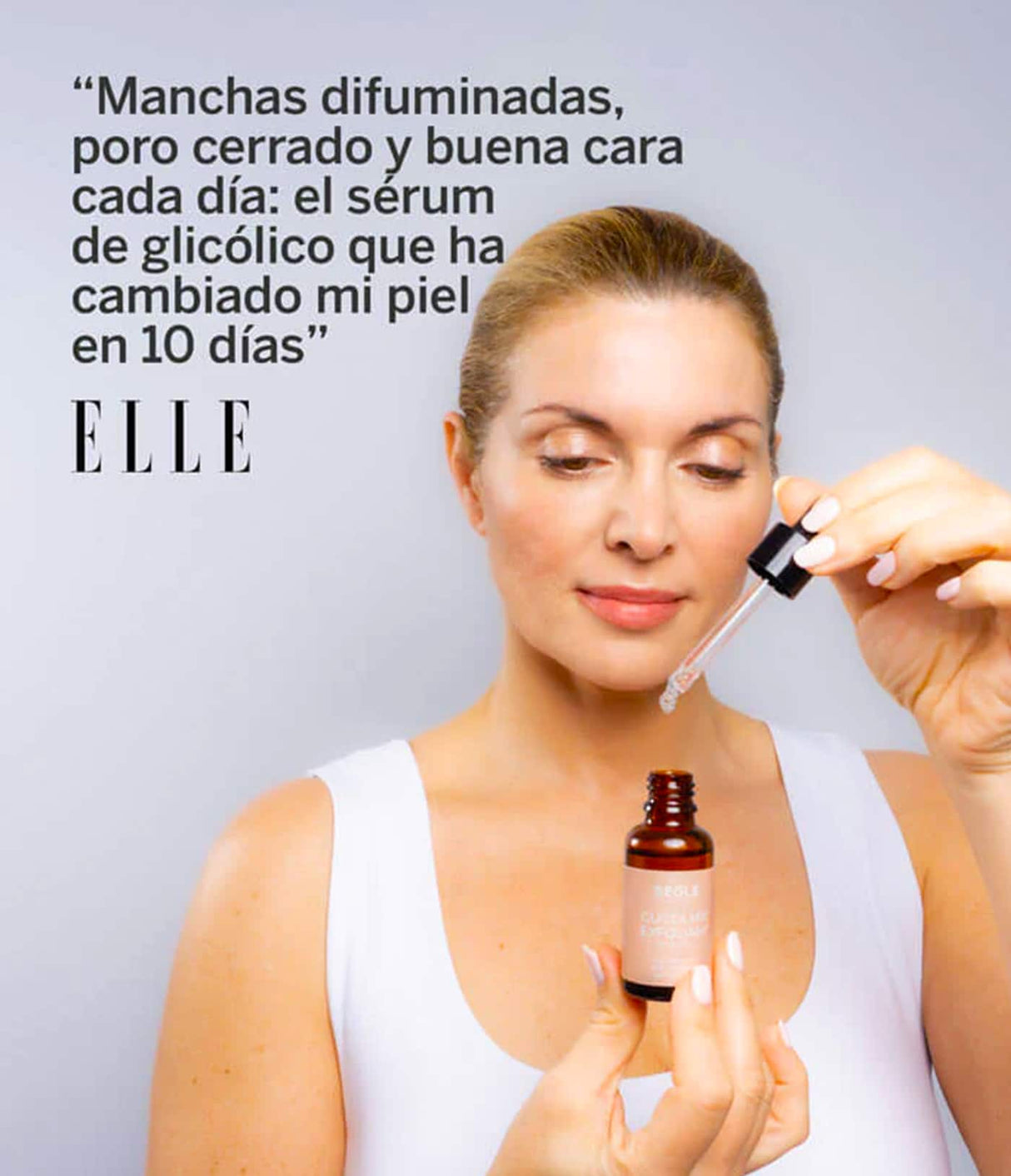25% off
Glycolmix Serum
29,93€
39,90€
Unit price
/
Unavailable
Formulado con un 20% de alfa-hidroxiácidos (AHA’s) como 15% ácido glicólico, 4% ácido láctico y 1% ácido cítrico. Elimina células muertas e impurezas, dejando una piel más suave, lisa y muy luminosa.
- Aclara las manchas superficiales producidas por el sol, unificando el tono de piel
- Elimina marcas de acné y cicatrices
- Suaviza las arrugas de expresión, hidrata y potencia la elasticidad
- Mejora la textura y apariencia de los poros. Afina la piel
Glycolmix Serum is backordered and will ship as soon as it is back in stock.
Couldn't load pickup availability
Ingredients
Ingredients
INGREDIENTES ACTIVOS
Este peeling químico está formulado a base de Alfa-hidroxiácidos (AHA’s), mezcla de ácidos extraídos de productos naturales, sobre todo frutas y alimentos.
- Ácido Glicólico al 15%, es un AHA que proviene de la caña de azúcar. Gracias a su reducido tamaño, atraviesa la piel más fácilmente, permitiendo una exfoliación y renovación celular más profundas. Consigue eliminar las manchas y marcas de acné más superficiales_ unifica el tono y alisa las arrugas. También actúa regulando la secreción sebácea y proporciona hidratación a la piel.
- Ácido Láctico al 4%, es un activo suavizante e hidratante. Tiene capacidades renovadoras, iluminadoras y de unificar el tono de la piel.
- Ácido Cítrico al 1%, procede de diversas frutas (cítricos como naranja, limón), se caracteriza por su acción antioxidante, Ilumina y aclara las manchas.
INGREDIENTES
Aqua, Alcohol Denat, Glycolic Acid, Ammonium Lactate, Lactic Acid, Propylene Glycol, Citric Acid, Benzyl Alcohol, Hydroxyethylcellulose, Parfum.
How to use
How to use
MODO DE EMPLEO
Aplica unas gotas en el rostro y el escote, (sobre todo en las zonas donde haya marcas o manchas). Si es la primera vez que lo usas, déjalo actuar entre 15 y 30 minutos y retira con agua (aclárate también las manos). Después, puedes utilizar un serum hidratante o regenerante como Skin Factor o Blue Balance.
Puedes aumentar el tiempo de aplicación de forma progresiva según tu piel se vaya acostumbrando, incluso dejarlo durante toda la noche. (Media hora después de su aplicación te recomendamos que utilices un serum hidratante o regenerante como Skin Factor o Blue Balance).
Como tratamiento de choque puedes usarlo 3-5 noches a la semana, y como tratamiento exfoliante de mantenimiento 1-2 noches por semana. Pieles secas y/o sensibles utilizar 1 vez por semana o cada 10 días.
Recuerda utilizar protección solar alta al día siguiente.
Results
Results
RESULTADOS

Reseñas
Reseñas

Glycolmix Serum
IT'S FOR YOU IF...
For dull skin, with superficial blemishes, expression wrinkles or acne marks.
To accelerate the renewal of all types of skin, which want to stay healthy, soft and vital. We believe that weekly exfoliation should always be part of your skin care routine.
To improve the condition of combination-oily, acne-prone skin. Prevents the appearance of pimples and blemishes as it keeps the pore clean.
In case of sensitive skin it should be used with caution (see How to use it). Do not use in case of very reactive or intolerant skin.
WHAT ARE AHA'S, ALPHAHYDROXYACIDS?
They are a type of natural acids that come from different plants, fruits and foods widely used in cosmetics and by dermatologists since they have a triple action: they exfoliate, renew and hydrate the skin in a very effective way and therefore improve its texture and quality. .
In fact, since ancient times, they have been used: Cleopatra bathed in sour milk (which contains lactic acid) to get much softer skin.
The best known alpha-hydroxy acids are: glycolic acid (comes from sugar cane), lactic acid (from sour milk), citric acid (citrus fruits: orange, lemon, lime, tangerine), malic acid (green apple) and Tartaric acid (comes from grapes). Other newer ones are lactobionic acid (obtained from lactose in milk) and maltobionic acid (obtained from maltose in barley).



